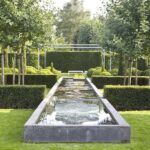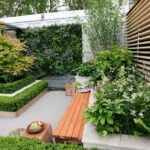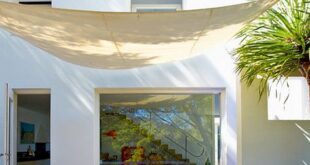Contemporary garden design is a popular trend that has been gaining momentum in recent years. This style of landscaping focuses on creating a clean, minimalistic aesthetic with a focus on incorporating modern elements such as geometric shapes, sleek lines, and neutral colors. Contemporary gardens often feature a combination of hardscaping elements like concrete, steel, and glass with carefully curated plant selections to create a harmonious balance between man-made structures and natural elements.
One key aspect of contemporary garden design is the concept of outdoor living spaces. These gardens are often designed with functionality and usability in mind, featuring areas for dining, lounging, and socializing. Outdoor kitchens, fire pits, and water features are common additions to contemporary gardens, allowing homeowners to fully utilize their outdoor space for entertaining and relaxation. Additionally, contemporary gardens frequently include sustainable features like rainwater harvesting systems, eco-friendly lighting, and native plantings to minimize the environmental impact of the design.
Another defining characteristic of contemporary garden design is the use of bold architectural elements to create visual interest. Sculptural elements like modern art pieces, unique planters, and custom-built structures add a sense of drama and sophistication to the garden, making it a true work of art. The juxtaposition of natural and man-made elements in contemporary gardens creates a sense of tension and intrigue, drawing the eye and creating a dynamic visual experience for visitors.
When it comes to plant selection in contemporary garden design, less is often more. Instead of overwhelming the space with a myriad of different plant species, contemporary gardens tend to focus on a carefully curated selection of plants that complement the overall design aesthetic. Grasses, succulents, and ornamental trees are popular choices for contemporary gardens, providing texture, color, and architectural interest without overcrowding the space. The use of repetitive planting schemes and mass plantings helps to create a sense of cohesion and unity throughout the garden.
In terms of maintenance, contemporary gardens are designed to be as low-maintenance as possible, making them an ideal choice for busy homeowners. Drought-tolerant plantings, efficient irrigation systems, and durable hardscaping materials help to reduce the amount of time and effort required to care for the garden. Regular pruning, weeding, and mulching are still necessary to keep the garden looking its best, but overall, contemporary gardens are designed to be easy to maintain and enjoy.
Overall, contemporary garden design offers a fresh and modern approach to landscaping that is well-suited to the needs and tastes of today’s homeowners. With its focus on clean lines, bold architectural elements, and sustainable practices, contemporary gardens provide a stylish and functional outdoor living space that is sure to impress visitors and provide a peaceful retreat for homeowners to enjoy. Whether you prefer a sleek and minimalist design or a more bold and dramatic aesthetic, contemporary garden design offers a wide range of possibilities to suit your personal style and preferences.
















